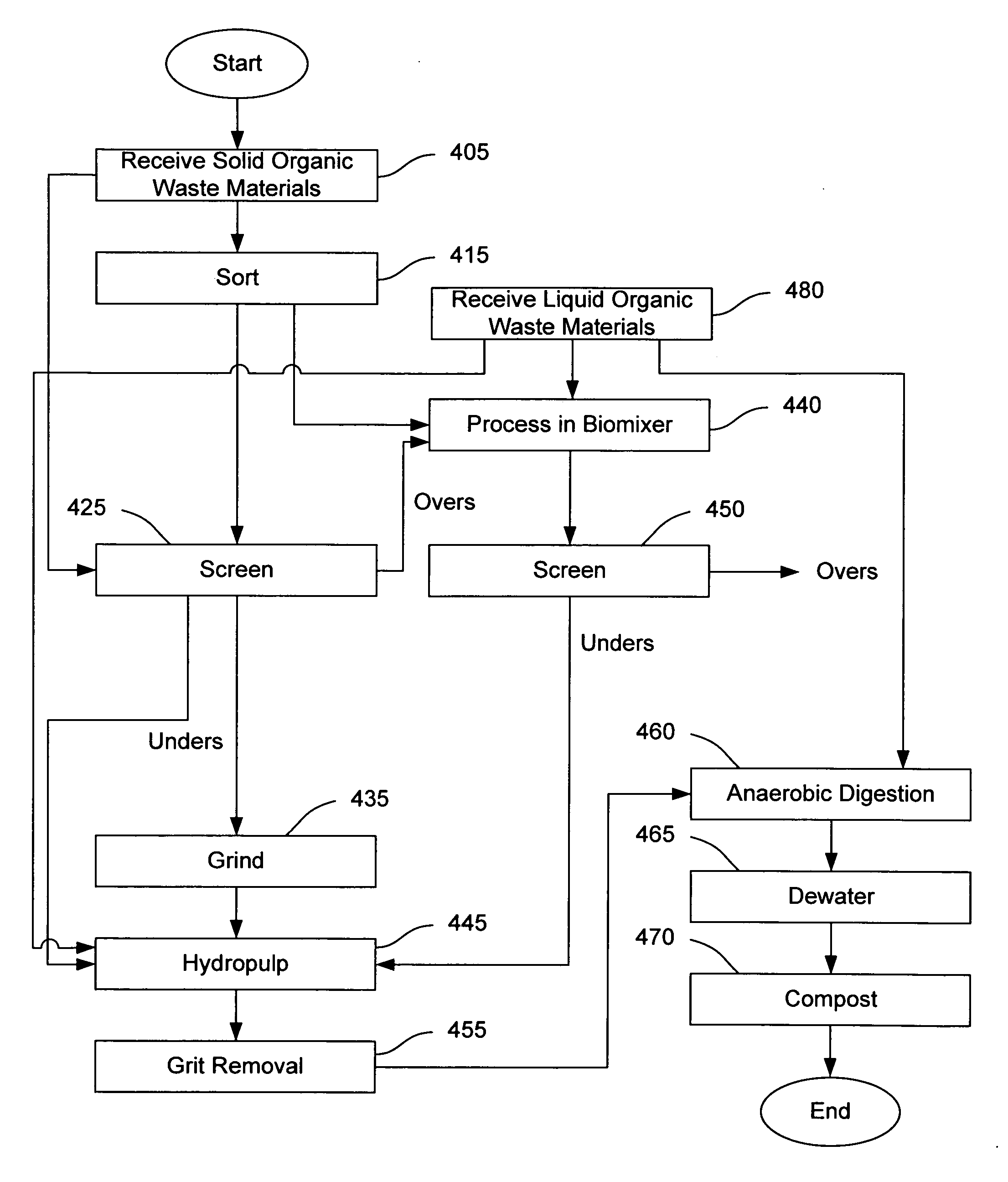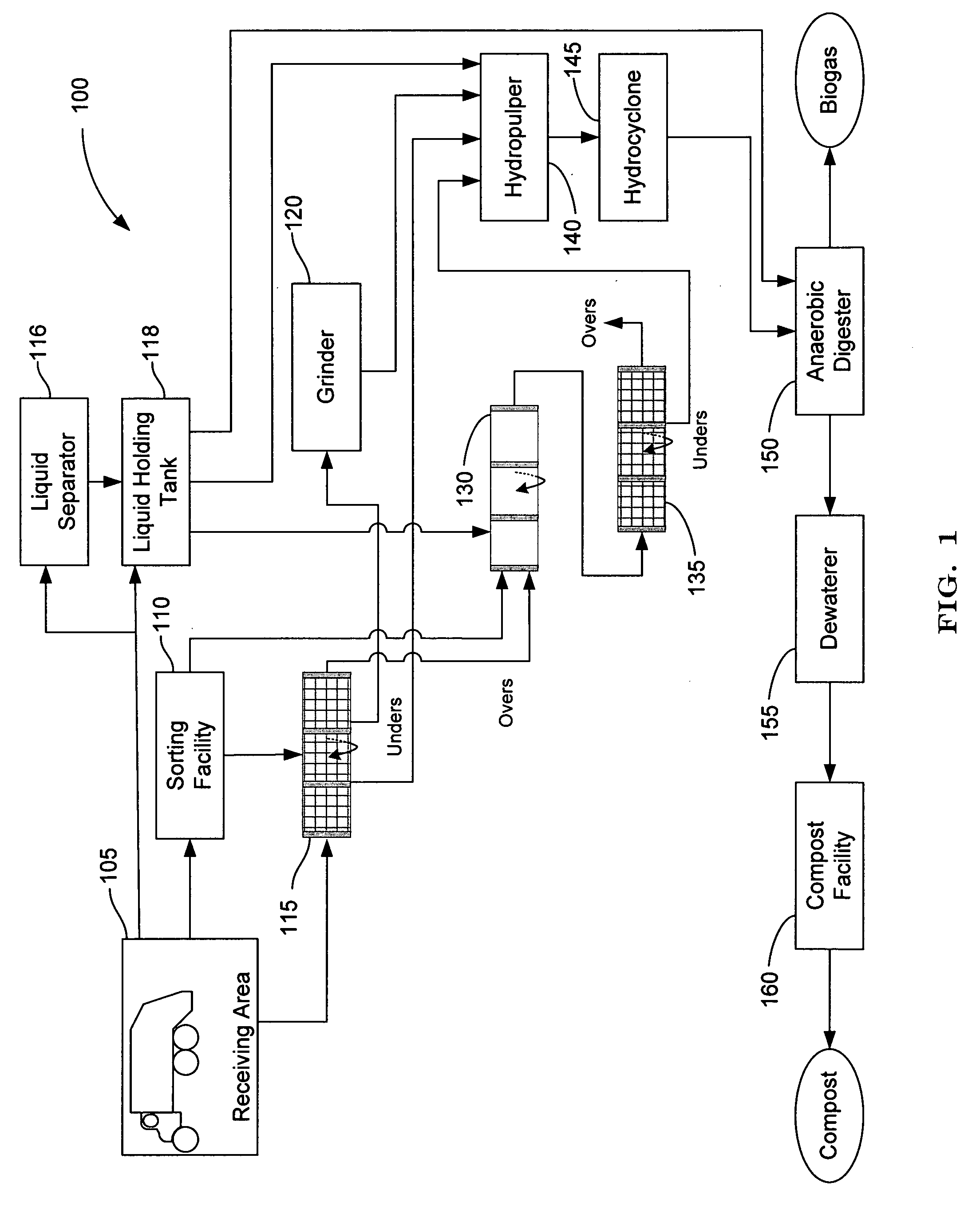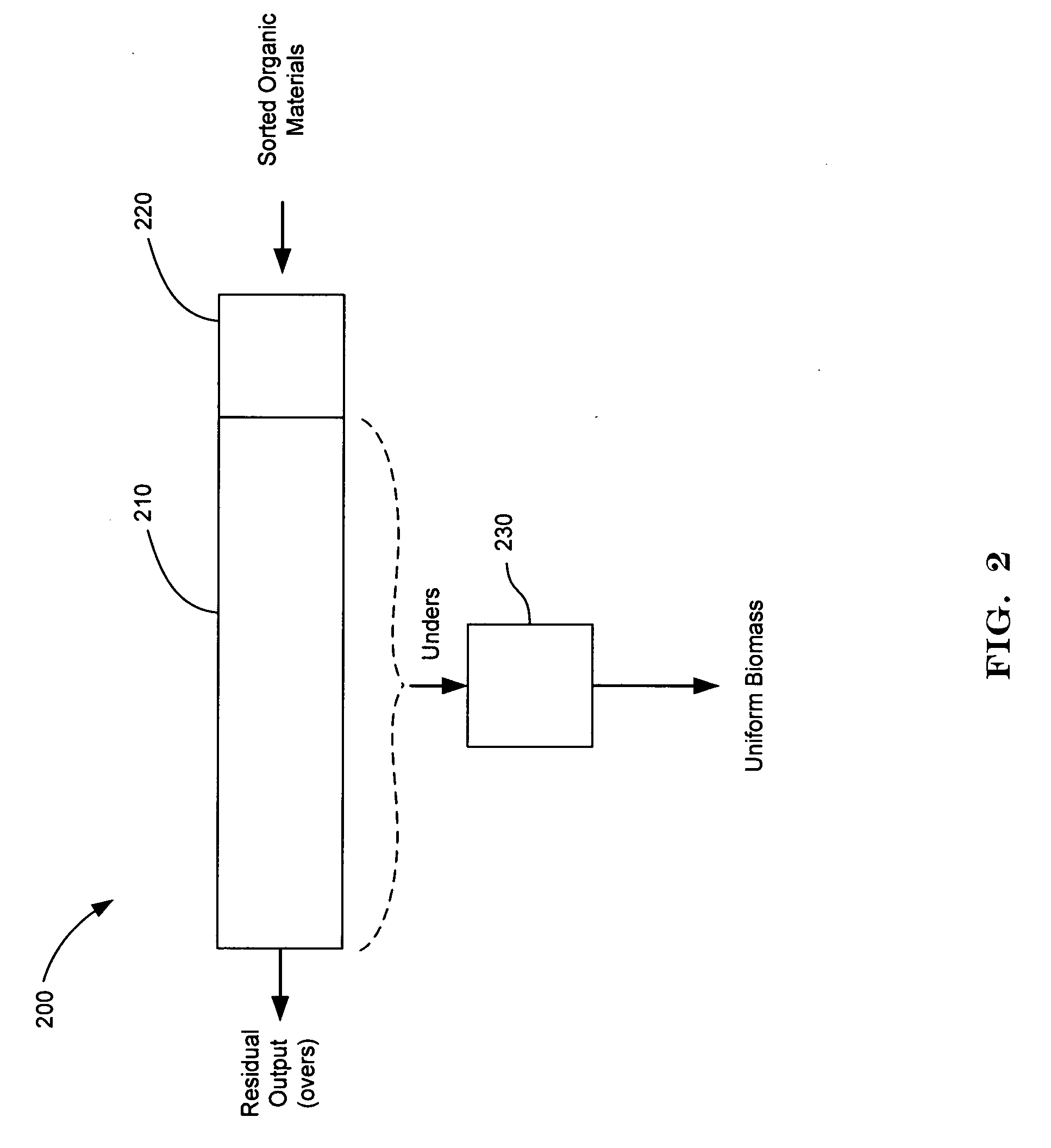Systems and methods for combining and converting solid and liquid organic waste materials into useful products
- Summary
- Abstract
- Description
- Claims
- Application Information
AI Technical Summary
Benefits of technology
Problems solved by technology
Method used
Image
Examples
Embodiment Construction
[0018]Systems and methods are provided for converting solid and liquid organic waste materials from various municipal waste streams to useful products. These systems and methods are capable of receiving solid organic waste materials having a wide range of compositions such as, for example, yard waste, food waste, paper, and the organic fraction of municipal solid waste (MSW). The systems and methods convert the organic waste materials into a uniform biomass that is suitable for conversion to useful products, such as fuels. Through the steps of the various methods, the solid organic waste materials are progressively reduced in size and cleaned of contamination. Final sizing and cleaning is performed with a hydropulper and a hydrocyclone. A biomixer is advantageously provided, prior to the hydropulper, to partially hydrolyze organic waste materials that are not initially suitable for processing in the hydropulper. Anaerobic digestion of the resulting uniform material, can be employed,...
PUM
 Login to view more
Login to view more Abstract
Description
Claims
Application Information
 Login to view more
Login to view more - R&D Engineer
- R&D Manager
- IP Professional
- Industry Leading Data Capabilities
- Powerful AI technology
- Patent DNA Extraction
Browse by: Latest US Patents, China's latest patents, Technical Efficacy Thesaurus, Application Domain, Technology Topic.
© 2024 PatSnap. All rights reserved.Legal|Privacy policy|Modern Slavery Act Transparency Statement|Sitemap



